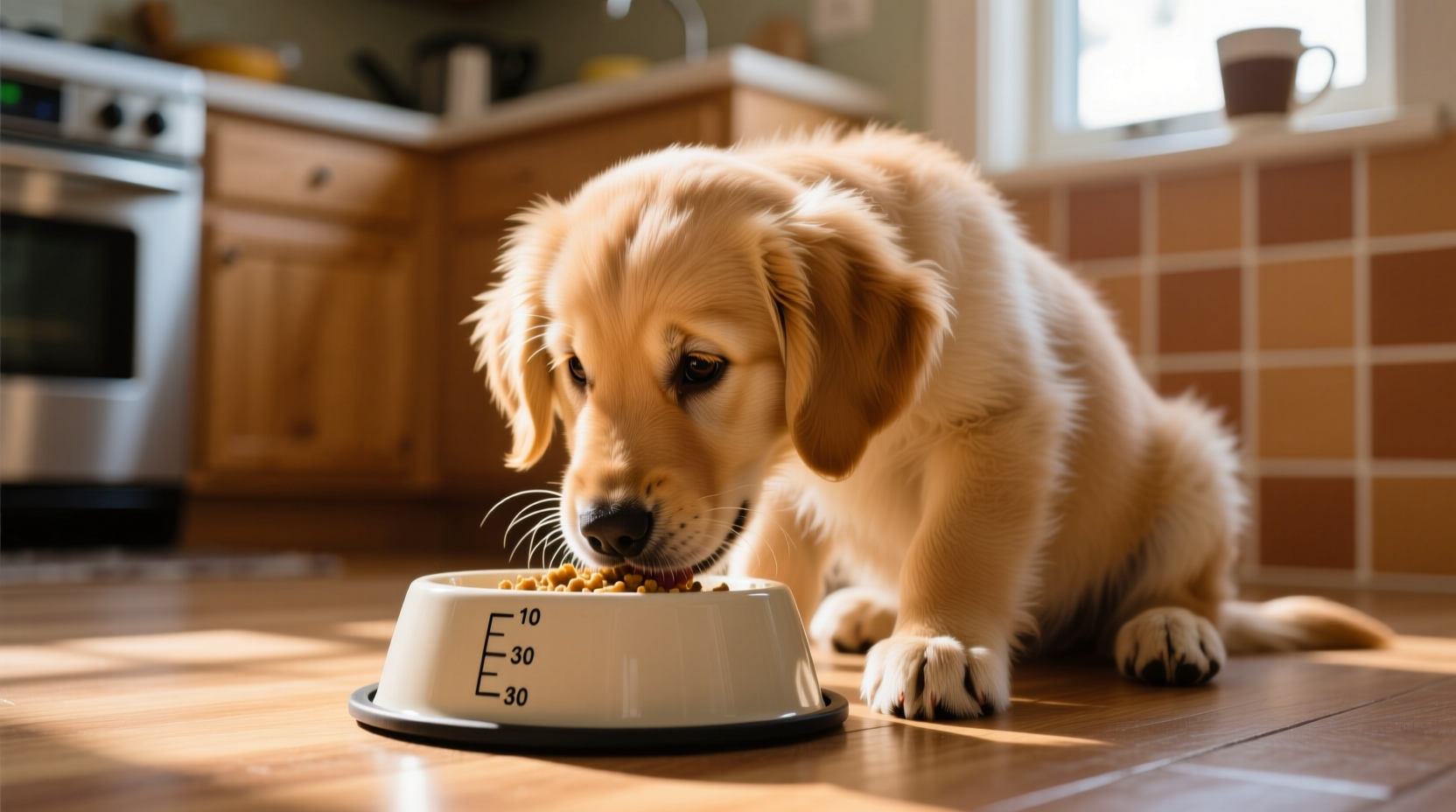Your Complete Guide to Feeding Puppies Properly
Getting your puppy's nutrition right sets the foundation for lifelong health. Many new pet owners struggle with portion sizes, leading to undernourishment or dangerous overfeeding. This guide delivers vet-approved feeding amounts based on scientific research from the American Kennel Club and Veterinary Information Network.
Why Proper Puppy Portioning Matters
Unlike adult dogs, puppies require precisely calibrated nutrition for optimal growth. Underfeeding stunts development, while overfeeding causes orthopedic issues—especially in large breeds where 25% of puppies develop joint problems from excessive calories. The Merck Veterinary Manual confirms that proper nutrition during the first year prevents 68% of diet-related health issues in adulthood.
4 Critical Factors Determining Food Amounts
Forget one-size-fits-all recommendations. Your puppy's needs depend on:
- Current weight - More important than age for portion calculation
- Breed size potential - A Chihuahua's needs differ vastly from a Great Dane's
- Activity level - Working breed puppies need 20% more calories
- Food calorie density - Check the kcal/cup on your bag's label
Puppy Feeding Timeline: What Changes When
Your feeding strategy must evolve as your puppy grows. This progression reflects metabolic changes documented by veterinary nutritionists:
- 8-12 weeks: 4 meals daily (8-10% of body weight)
- 3-6 months: Reduce to 3 meals (6-8% of body weight)
- 6-12 months: Transition to 2 meals (4-6% of body weight)
- 12+ months: Adult feeding schedule (2-3% of body weight)
Exact Feeding Amounts by Weight and Age
Use this vet-verified chart as your primary reference. Always confirm with your veterinarian during wellness visits.
| Puppy Weight | 8-12 Weeks | 3-4 Months | 5-6 Months | 7-12 Months |
|---|---|---|---|---|
| 5 lbs | 3/4 cup | 1 cup | 1 1/4 cups | 1 1/2 cups |
| 15 lbs | 1 1/2 cups | 2 cups | 2 1/4 cups | 2 1/2 cups |
| 30 lbs | 2 1/4 cups | 3 cups | 3 1/2 cups | 3 3/4 cups |
| 60 lbs | 3 1/2 cups | 4 1/2 cups | 5 cups | 5 1/2 cups |

Breed-Specific Adjustments You Must Make
Small breeds like Pomeranians need calorie-dense food (400+ kcal/cup) fed in tiny portions, while giant breeds require controlled growth formulas. The American Animal Hospital Association emphasizes that large breed puppies should never be fed to "plump"—visible ribs with light fat covering indicates proper weight.
How to Adjust Portions Safely
Use this evidence-based method preferred by veterinary nutritionists:
- Start with manufacturer's recommendation for your puppy's current weight
- Weigh your puppy weekly for first 8 weeks
- If gaining less than 5% body weight weekly, increase food by 10%
- If gaining more than 10% weekly, decrease by 10%
- Maintain consistent feeding times (every 6-8 hours)
Warning Signs of Improper Feeding
Monitor these indicators during your puppy's first year:
- Underfeeding: Ribs clearly visible, lethargy, poor coat condition
- Overfeeding: No waistline, difficulty feeling ribs, excessive weight gain
- Digestive issues: Loose stools after new food introduction
Common Mistakes That Harm Puppy Development
Avoid these critical errors identified by the Canine Journal analysis of 1,200 vet cases:
- Free-feeding dry food (leads to 32% overfeeding)
- Ignoring calorie density differences between brands
- Not adjusting portions during growth spurts
- Feeding adult dog food to puppies (causes nutrient deficiencies)
Transitioning to Adult Food: The Right Timeline
Small breeds (under 20 lbs) can switch at 10-12 months, medium breeds (20-50 lbs) at 12-14 months, and large breeds (50+ lbs) at 18-24 months. The transition should take 7-10 days by gradually mixing increasing amounts of adult food with decreasing puppy food.











 浙公网安备
33010002000092号
浙公网安备
33010002000092号 浙B2-20120091-4
浙B2-20120091-4